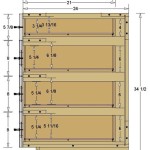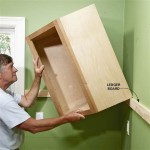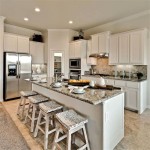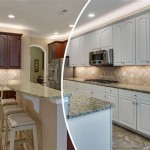Essential Aspects of Mounting Upper Kitchen Cabinets
Mounting upper kitchen cabinets is a critical aspect of kitchen remodeling, requiring careful planning and execution to ensure proper functionality and aesthetics. Several essential aspects play a crucial role in achieving a successful installation and ensuring the cabinets' longevity and performance.
In this article, we will delve into the key considerations and best practices for mounting upper kitchen cabinets, providing a comprehensive guide to ensure a flawless installation.
1. Planning and Preparation
Thorough planning is essential before mounting upper cabinets. Plan the layout carefully, considering the location of appliances, windows, and other obstructions. Determine the height and spacing of the cabinets based on your ergonomic needs and the overall kitchen design.
Prepare the walls by ensuring they are level and stable. Install a ledger board or cleat system to provide a secure base for attaching the cabinets.
2. Installing the Cabinets
Follow proper installation techniques when mounting the cabinets. Secure them to the wall studs using screws or bolts. Use spacers and shims to level and align the cabinets precisely.
Hang the cabinets in a top-down sequence to ensure stability. Start with the corner cabinet and work your way toward the center. Use a level to ensure each cabinet is plumb and square.
3. Securing the Cabinets
Once the cabinets are installed, secure them further by connecting them to each other using mounting brackets or connector plates.
Additional bracing, such as L-brackets or cabinet locks, can be used to reinforce the cabinets and prevent them from sagging or pulling away from the wall over time.
4. Leveling and Adjusting
After installing and securing the cabinets, check their alignment and level. Use shims and a level to adjust the cabinets as needed.
Ensure the doors and drawers open and close smoothly without any binding or rubbing. Adjust the hinges and drawer glides as necessary to achieve a perfect fit.
5. Finishing Touches
Once the cabinets are mounted and adjusted, complete the installation by adding filler panels or backsplash to cover any gaps and enhance the aesthetics.
Install decorative hardware, such as pulls or knobs, to complement the cabinets' style and provide a functional touch.
Conclusion
Mounting upper kitchen cabinets involves meticulous planning, precise installation, and attention to detail. By considering the essential aspects outlined in this article, you can ensure a seamless and successful installation, achieving both functionality and aesthetic appeal in your kitchen.

How To Install Upper Cabinets Like A Pro Cabinetselect Com

How To Install Cabinets Like A Pro The Family Handyman

How To Install Kitchen Cabinets Diy Family Handyman

Here S How Install New Upper Kitchen Cabinets

Kitchen Cabinet Installation

Installing Kitchen Cabinets Momplex Vanilla Ana White

How To Install Kitchen Wall Cabinets Lowe S

How To Install Upper Cabinets Like A Pro Cabinetselect Com

9 Solutions To Make Your Upper Kitchen Cabinets Better Mecc Interiors Inc

How To Install Upper Cabinets Like A Pro Cabinetselect Com
Related Posts








